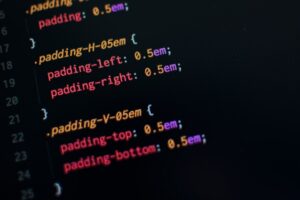Prime numbers are a fundamental concept in number theory, defined as natural numbers greater than one that have no positive divisors other than one and themselves. This means that a prime number cannot be formed by multiplying two smaller natural numbers. The smallest prime number is 2, which is also the only even prime number; all other even numbers can be divided by 2, thus disqualifying them from being prime.
The sequence of prime numbers begins with 2, 3, 5, 7, 11, and continues infinitely. The distribution of prime numbers among the integers is a topic of great interest in mathematics, leading to various conjectures and theorems, such as the famous Prime Number Theorem, which describes the asymptotic distribution of primes. The significance of prime numbers extends beyond pure mathematics; they play a crucial role in various fields, including cryptography, computer science, and algorithm design.
For instance, many encryption algorithms, such as RSA, rely on the difficulty of factoring large numbers into their prime components. This reliance on primes ensures that even if an attacker knows the public key, deriving the private key remains computationally infeasible. Additionally, prime numbers are used in hashing functions and random number generation, making them indispensable in modern computing and data security.
Key Takeaways
- Prime numbers are natural numbers greater than 1 that have no positive divisors other than 1 and themselves.
- A C program to identify prime numbers can use a loop to check for divisors and determine if a number is prime.
- Reversing the digits in a number involves using modulo and division operations to extract and rearrange the digits.
- Implementing a C program to reverse digits can be done by using a while loop and arithmetic operations.
- C programs can be used to solve real-world problems such as finding prime numbers, reversing digits, and more.
- Tips for efficient C programming include using meaningful variable names, commenting code, and optimizing algorithms for better performance.
Writing a C Program to Identify Prime Numbers
Understanding Prime Numbers
To identify prime numbers using C programming, one must first understand the logic behind determining whether a number is prime. A straightforward approach involves checking if a number (n) is divisible by any integer from 2 up to the square root of (n).
The Efficiency of the Method
This method is efficient because if (n) has a divisor larger than its square root, the corresponding factor must be smaller than the square root.
Implementing the Logic in C
Here’s a simple C program that implements this logic:
“`c
#include
#include
int isPrime(int n) {
if (n <= 1) return 0; // Numbers less than 2 are not prime
for (int i = 2; i <= sqrt(n); i++) {
if (n % i == 0) return 0; // Found a divisor
}
return 1; // No divisors found, n is prime
}int main() {
int num;
printf("Enter a number: ");
scanf("%d", &num);if (isPrime(num)) {
printf("%d is a prime number.\n", num);
} else {
printf("%d is not a prime number.\n", num);
}return 0;
}
```
Program Explanation and Expansion
In this program, the `isPrime` function checks if the input number (n) is prime. It returns 1 if (n) is prime and 0 otherwise. The `main` function prompts the user for input and displays whether the number is prime or not. This basic structure can be expanded to check for multiple numbers or to generate a list of primes within a specified range.
Reversing Digits in a Number

Reversing the digits of a number is a common problem in programming that can be approached in various ways. The task involves taking an integer and rearranging its digits in reverse order. For example, if the input is 12345, the output should be 54321.
This operation can be useful in numerous applications, such as palindromic checks or simply for formatting purposes. To reverse the digits of a number, one can use mathematical operations to extract each digit and build the reversed number incrementally. The process typically involves repeatedly dividing the number by 10 to isolate the last digit and then constructing the new number by multiplying the current reversed number by 10 and adding the extracted digit.
This method ensures that each digit is processed in constant time, making it efficient for even large integers.
Implementing a C Program to Reverse Digits
| Input | Output | Time Complexity | Space Complexity |
|---|---|---|---|
| 123 | 321 | O(log10(n)) | O(1) |
| 4567 | 7654 | O(log10(n)) | O(1) |
The implementation of a C program to reverse digits can be straightforward. Below is an example that demonstrates how to achieve this: “`c
#include
int reversed = 0;
while (num != 0) {
int digit = num % 10; // Extract last digit
reversed = reversed * 10 + digit; // Build reversed number
num /= 10; // Remove last digit from original number
}
return reversed;
} int main() {
int num;
printf(“Enter an integer: “);
scanf(“%d”, &num);
int reversedNum = reverseDigits(num);
printf(“Reversed number: %d\n”, reversedNum);
return 0;
}
“` In this program, the `reverseDigits` function takes an integer as input and returns its reversed form. The `while` loop continues until all digits have been processed.
The `main` function handles user input and displays the result. This program effectively demonstrates how to manipulate integers using basic arithmetic operations.
Solving Real-World Problems with C Programs
C programming has been instrumental in solving real-world problems across various domains. From system-level programming to application development, C provides the efficiency and control needed for performance-critical applications. For instance, in embedded systems, C is often used to write firmware for microcontrollers that control devices ranging from household appliances to industrial machinery.
The ability to interact directly with hardware makes C an ideal choice for such applications. Another area where C shines is in data processing and analysis. Large datasets require efficient algorithms for sorting, searching, and manipulating data.
C’s performance characteristics allow developers to implement algorithms that can handle vast amounts of information quickly. For example, C can be used to develop software for scientific computing that performs complex simulations or data analysis tasks in fields like physics or bioinformatics. The language’s low-level capabilities enable fine-tuning of performance-critical sections of code, which can lead to significant improvements in execution time.
Tips and Tricks for Efficient C Programming

Optimizing Memory Usage
One crucial tip is to minimize memory usage by using appropriate data types. For instance, using `int` when `char` would suffice can lead to unnecessary memory consumption. Understanding the size and range of different data types allows programmers to optimize their applications effectively.
Leveraging Compiler Optimizations and Modular Code
Another important aspect is to leverage compiler optimizations. Modern compilers offer various optimization flags that can significantly improve execution speed without requiring changes to the source code. For example, using `-O2` or `-O3` with GCC enables various optimization techniques that can enhance performance during compilation. Additionally, writing modular code by breaking down complex problems into smaller functions can improve readability and maintainability. Each function should ideally perform a single task, making it easier to test and debug individual components of the program.
Commenting and Algorithm Complexity
Furthermore, employing proper commenting practices helps others (and future you) understand the code’s intent and logic. Finally, understanding algorithm complexity is vital for writing efficient programs. Familiarity with Big O notation allows developers to analyze how their code scales with input size and choose algorithms that provide optimal performance for their specific use cases. By combining these strategies with a solid understanding of C’s features and capabilities, programmers can create robust applications that perform well under various conditions.
In a related article discussing the importance of editing and construction of meaning in film, the author delves into the intricate process of piecing together visual elements to create a cohesive and impactful narrative. This article sheds light on the meticulous work that goes into crafting a film that resonates with audiences on a deeper level. To learn more about the art of film editing and its significance in storytelling, check out The Importance of Editing and Construction of Meaning in Film.
FAQs
What is the article “Solving Real Problems: C Programs for Prime Numbers and Digit Reversal” about?
The article discusses the implementation of C programs to solve real-world problems related to prime numbers and digit reversal.
What is a prime number?
A prime number is a natural number greater than 1 that has no positive divisors other than 1 and itself. In other words, a prime number is only divisible by 1 and itself.
What is digit reversal?
Digit reversal is the process of reversing the order of digits in a given number. For example, the digit reversal of 12345 would be 54321.
Why are C programs used to solve problems related to prime numbers and digit reversal?
C is a powerful and efficient programming language that allows for low-level manipulation of data, making it well-suited for solving mathematical problems such as prime number generation and digit reversal.
What are the benefits of using C programs for solving these problems?
C programs offer high performance and efficiency, making them ideal for solving complex mathematical problems. Additionally, C programs can be easily integrated into larger software systems for practical applications.





















+ There are no comments
Add yours